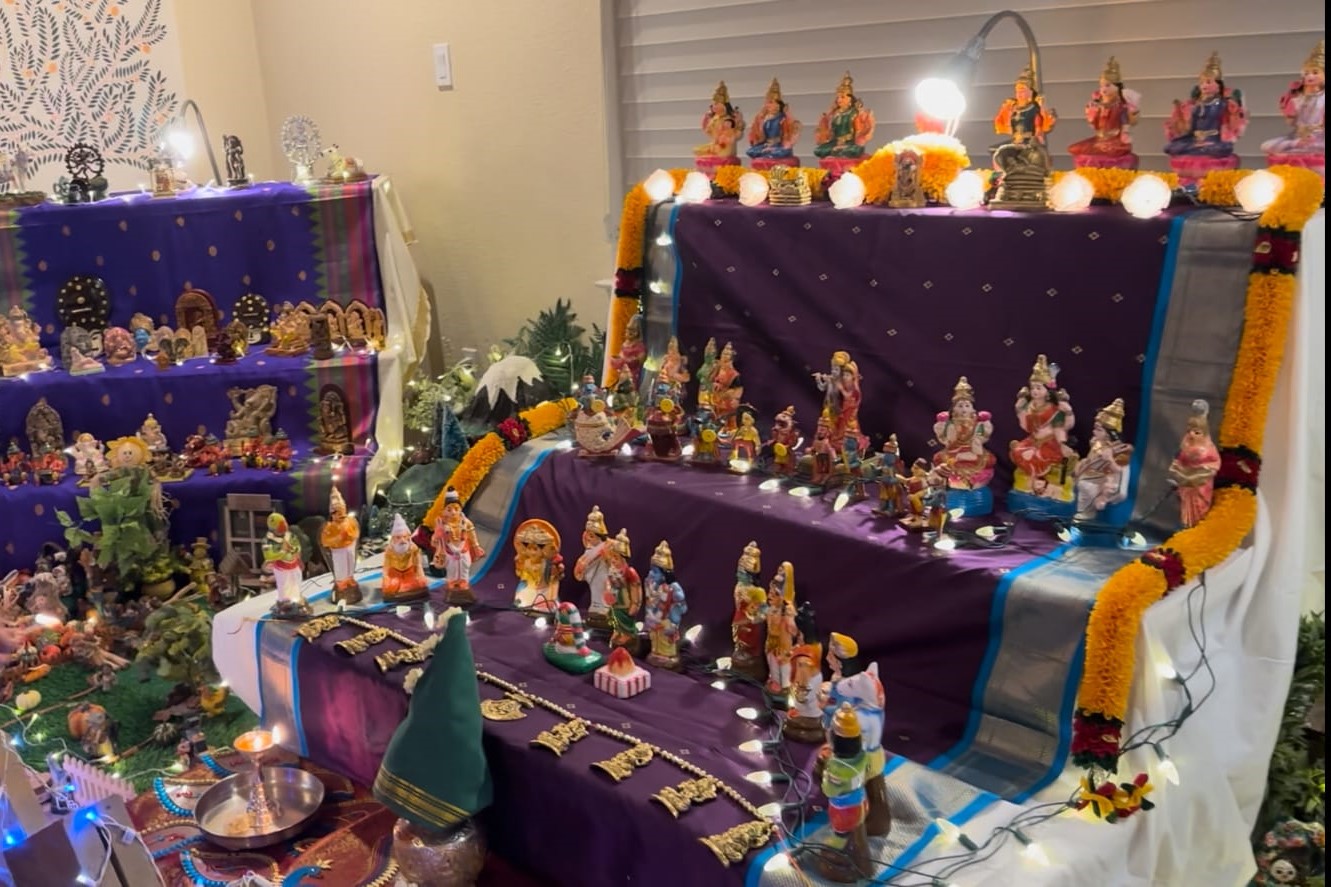South Indian Americans celebrate Navratri with Golu
In the Bay Area, dedicated parents carve out time in their children's hectic schedules to host a Navratri celebration at home. Months of planning go into creating the theme for the year’s golu display.
 Jaya Rupanagunta's traditional Golu display / Ritu Marwah
Jaya Rupanagunta's traditional Golu display / Ritu Marwah
The goddesses come alive for ten days of Navratri. South Indian American families set up pedestals of 3, 5 or 9 levels or steps and place the dolls or idols on them collectively called “Golu.”
“On the first day of the new moon the golu is set up,” says Geeta who moved to the Bay Area with her parents when she was ten and has since raised two boys of her own in the Valley.
“I remember, during the days of Navratri, in India, it was an open house. Neighbors lit a lamp every evening and said a prayer. Children went house to house to look at the dolls and get a sweet. Sometimes the lady of the house requested for a song or bhajan in return. The goddess enters the house and stays there for ten days. It is a personal relationship with her. The divine presence is real. I feel we see it as an opportunity to socialize and share our culture with our children.”
In the Bay Area, dedicated parents carve out time in their children's hectic schedules to host a Navratri celebration at home. Months of planning go into creating the theme for the year’s golu display.
This year Jaya Rupanagunta’s family chose “Tirupati Temple” as the theme of their golu. “I want to showcase to my children why the temple at Tirupati is so important and the story behind why it is located where it is,” said Rupanagunta.
Children are attracted to the colorful golu or idols and the story behind each doll. Very early in life the children are introduced to the culture and the traditions are passed down to them. “Audio visual aids help people retain information,” said Rupanagunta’s grandfather MK Rao.
He loves it when the children come over and sing and perform their musical talents. “The earlier the small acorns are groomed with their cultural traditions the mightier the oaks they grow into. We should retain the good in our culture,” he said.
“ We got Sundal (sautéed chickpeas)”, said Ram who has pleasant memories of being invited to visit Golus by friends and family. The chickpea snack was the highlighted memory of his childhood. Each house had its own recipe for the coconut dusted, boiled lentil dish tempered with mustard seeds, curry leaves, asafetida, red chillies and ginger. No onions are used when the goddess is visiting.
Sometimes the theme is based on a color or a single god, for example Shiva,” said Indish creations owner who has recently been getting requests for golu decor. Indish creations is selling golu decor that the owner makes herself and ships all over the USA.
Friends and family visit each other's homes to eat, listen to children singing Carnatic music or bhajans, and admire the Golu display. Each family takes turns to host golu evening making makes sure all friends get their turn to showcase their displays.
Kamini Ramani CMO Mayfield writes, “On Dolls and Displays of Community. “Being raised in a South Indian family in Bombay, Navaratri meant keeping Golu, the festive display of dolls and figurines arranged in tiers. The cultural reasons for keeping Golu are deeply intertwined with storytelling, community, creativity, education, and the celebration of tradition.”
Rupanagunta family has always told the stories of their shared learning from travel through their golu. “The year we went to Greece the family added a corner on ancient civilizations to the display. Another year the palaces of ancient Asia were created,” said Rupanagunta.





.jpg)
.jpg)
.png)
.png)

.png)

.png)
.jpg)

Comments
Start the conversation
Become a member of New India Abroad to start commenting.
Sign Up Now
Already have an account? Login